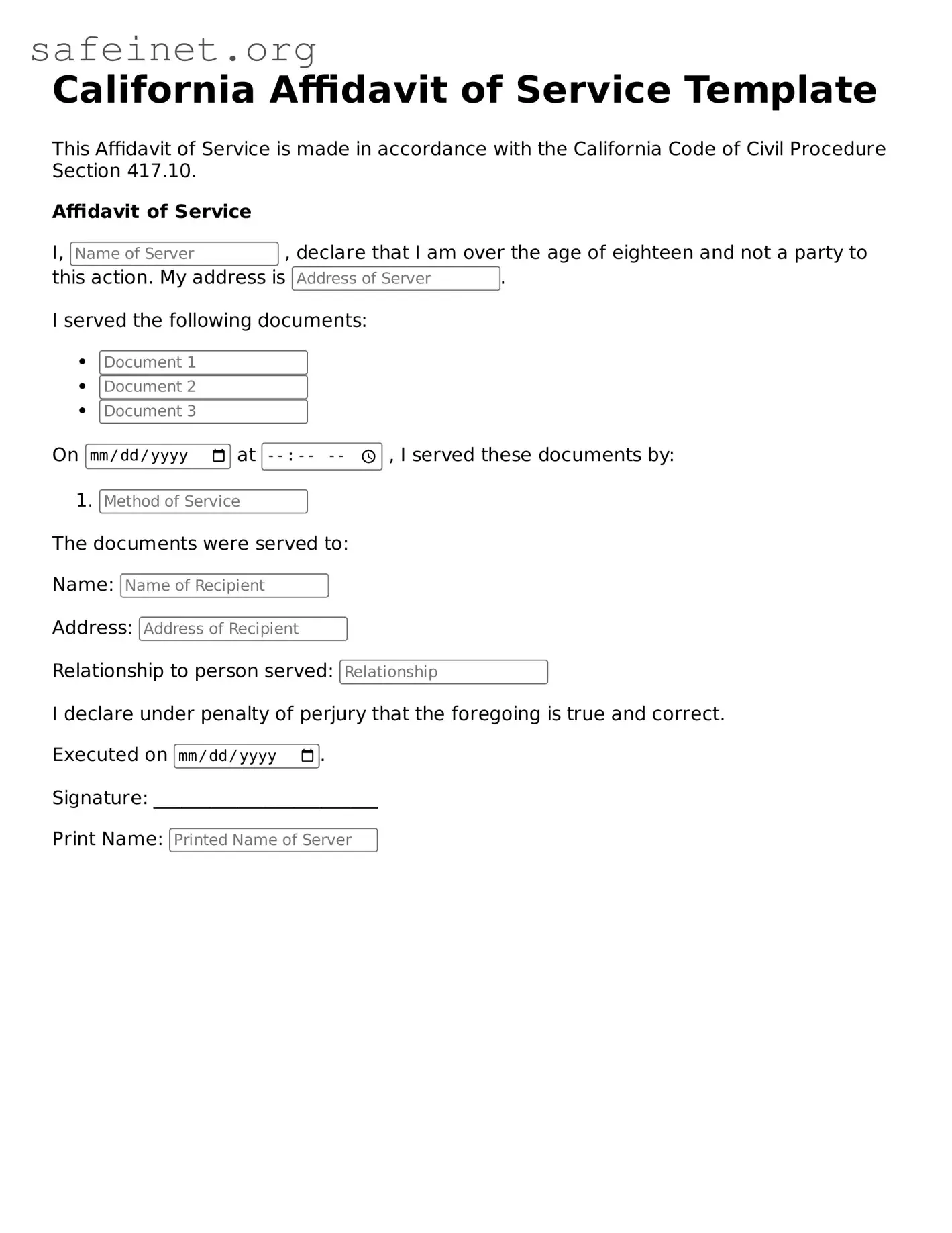What is the California Affidavit of Service?
The California Affidavit of Service is a legal document used to verify that a person has been properly served with legal documents, such as summonses or complaints. This verification process is essential in ensuring that all parties involved in a legal matter are notified and have the opportunity to respond. It provides proof that legal procedures were followed correctly, which can be critical in court proceedings.
Who can serve legal documents in California?
In California, legal documents can be served by anyone who is at least 18 years old and not a party to the case. This includes private process servers, law enforcement officers, and even friends or family members. It's important that the person serving the documents understands the laws and requirements, as improper service can lead to delays in legal proceedings.
What information is required on the Affidavit of Service?
The Affidavit of Service must include detailed information such as the date and time of service, the name of the individual being served, and their address. The server's name and signature, along with a description of how the service was executed, must also be provided. Clear and precise information helps establish that proper procedures were followed.
Do I need to file the Affidavit of Service with the court?
Yes, you typically need to file the Affidavit of Service with the court where your case is pending. This filing serves as proof that the other party was properly notified of the proceedings. Depending on the court’s requirements, this must be done within a specific timeframe after the documents are served.
What happens if the documents are not served correctly?
If the documents are not served correctly, it can significantly impact your case. The court may delay proceedings or dismiss the case altogether, as proper service is fundamental to ensuring that all parties have a fair chance to respond. In some cases, you may need to restart the service process, which can lead to additional time and expenses.
Can I serve documents by mail?
Yes, in certain instances, you can serve documents by mail, but specific rules must be followed. Generally, this method is allowed if the recipient agrees to accept service in this manner or if the law permits it. Be mindful that serving by mail may require additional proof of service, such as a signed receipt from the recipient.
What is the timeline for serving legal documents?
In California, the timeline for serving legal documents can vary based on the type of case and the manner of service. Generally, you should aim to serve the documents as soon as possible, especially if there are court-imposed deadlines. Some documents may require service to occur a certain number of days before a court hearing or trial, so it is essential to plan accordingly.
Is there a fee for filing the Affidavit of Service?
Filing an Affidavit of Service usually incurs a fee, which varies by court. It's wise to check with your specific court for the current rates. Additionally, if you hired a process server or used a private service, those costs should also be considered as part of your budget for legal expenses.
What should I do if I have more questions about the Affidavit of Service?
If you have further questions about the Affidavit of Service or need assistance with the process, it is beneficial to consult with a legal professional. They can provide specific guidance based on your situation and ensure that all legal requirements are met appropriately to protect your interests.
